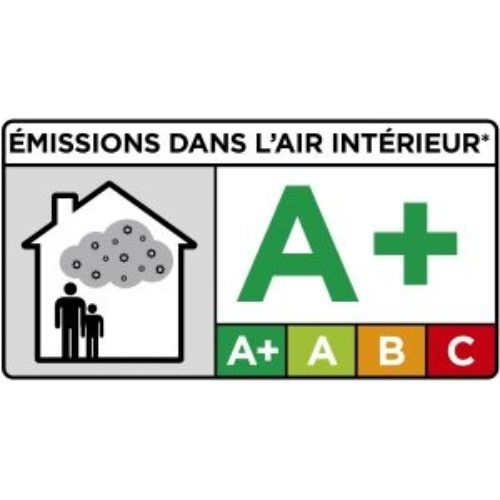French VOC label Émissions dans l'air Intérieur
Here you will find information on the French VOC label Émissions dans l’air Intérieur.

VOC Regulation for construction products and furnishing and equipment materials
Since January 1, 2012, construction products as well as furnishing and equipment materials that are newly introduced to the French market must be classified and labeled with regard to their emissions. With ISO 16000, the test basis corresponds to the methodology prescribed by law in Germany, which is also used by the Committee for Health-related Evaluation of Building Products (AgBB scheme) and the German Institute for Building Technology (DIBt).
The French label “Émissions dans l’air intérieur” is a label for building products that evaluates and classifies their emissions of volatile organic compounds (VOCs). It aims to improve indoor air quality by providing consumers and professionals with information on the emissions of building products.
The label has four classes that indicate the level of emissions:
- A+ (very low emissions)
- A (low emissions)
- B (average emissions)
- C (high emissions)
Products are divided into these classes based on the amount of VOCs they release into the air. This assessment helps in the selection of products that contribute to improving indoor air quality.
Award criteria for the French VOC label
The award criteria for the French “Émissions dans l’air intérieur” label are based on the assessment of emissions of volatile organic compounds (VOCs) from building products. This assessment is carried out according to defined limit values for emissions after 28 days.
The criteria enable consumers and professionals to select products based on their emission properties and thus improve indoor air quality.
Limit values for the French VOC label
| Substances/emissions class | A+ | A | B | D |
|---|---|---|---|---|
| Formaldehyde | < 10 | < 60 | < 120 | > 120 |
| Acetaldehyde | < 200 | < 300 | < 400 | > 400 |
| Toluene | < 300 | < 450 | < 600 | > 600 |
| Tetracholoroelylene | < 250 | < 350 | < 500 | > 500 |
| Xylene | < 200 | < 300 | < 400 | > 400 |
| 1,2,4 – Trlmethytbenzene | < 1000 | < 1500 | < 2000 | > 2000 |
| 1,4 – Dtchlorobenzene | < 60 | < 90 | < 120 | > 120 |
| Ethylbenzene | < 750 | < 1000 | < 1500 | > 1500 |
| 2 – Butoxyelhanol | < 1000 | < 1500 | < 2000 | > 2000 |
| Styrene | < 250 | < 350 | < 500 | > 500 |
| TVOC (28 days) | < 1000 | < 1500 | < 2000 | > 2000 |
Émissions dans l'air intérieur: Certification body
The certification body for the “Émissions dans l’air intérieur” label is the French Ministry of the Environment, more precisely the Ministère de la Transition écologique.
Costs for the Émissions dans l'air intérieur label
The cost of certification with the “Émissions dans l’air intérieur” label is not indicated directly on the official website of the French Ministry of the Environment.
The Émissions dans l'air intérieur label is suitable for the following product groups:
- Floor coverings
- Wall and ceiling cladding
- Partition walls and suspended ceilings
- Insulation materials
- Doors and windows
- Products for laying or preparing the above-mentioned products
Is the Émissions dans l'air intérieur label mandatory?
The use of the “Émissions dans l’air intérieur” label is mandatory for all construction products that are used indoors and are offered on the French market. Manufacturers must label the emissions of their products to inform consumers about the potential impact on indoor air quality.
Recognition of the Émissions dans l'air intérieur label in other certification systems
The “Émissions dans l’air intérieur” label is recognized and taken into account by several certification systems. It can have a positive influence on the achievement of certification standards such as DGNB, LEED and BREEAM, as these systems often include indoor air quality as an assessment criterion. Products labeled with the “Émissions dans l’air intérieur” label meet strict emission criteria and thus contribute to fulfilling the requirements of these sustainability certifications.


